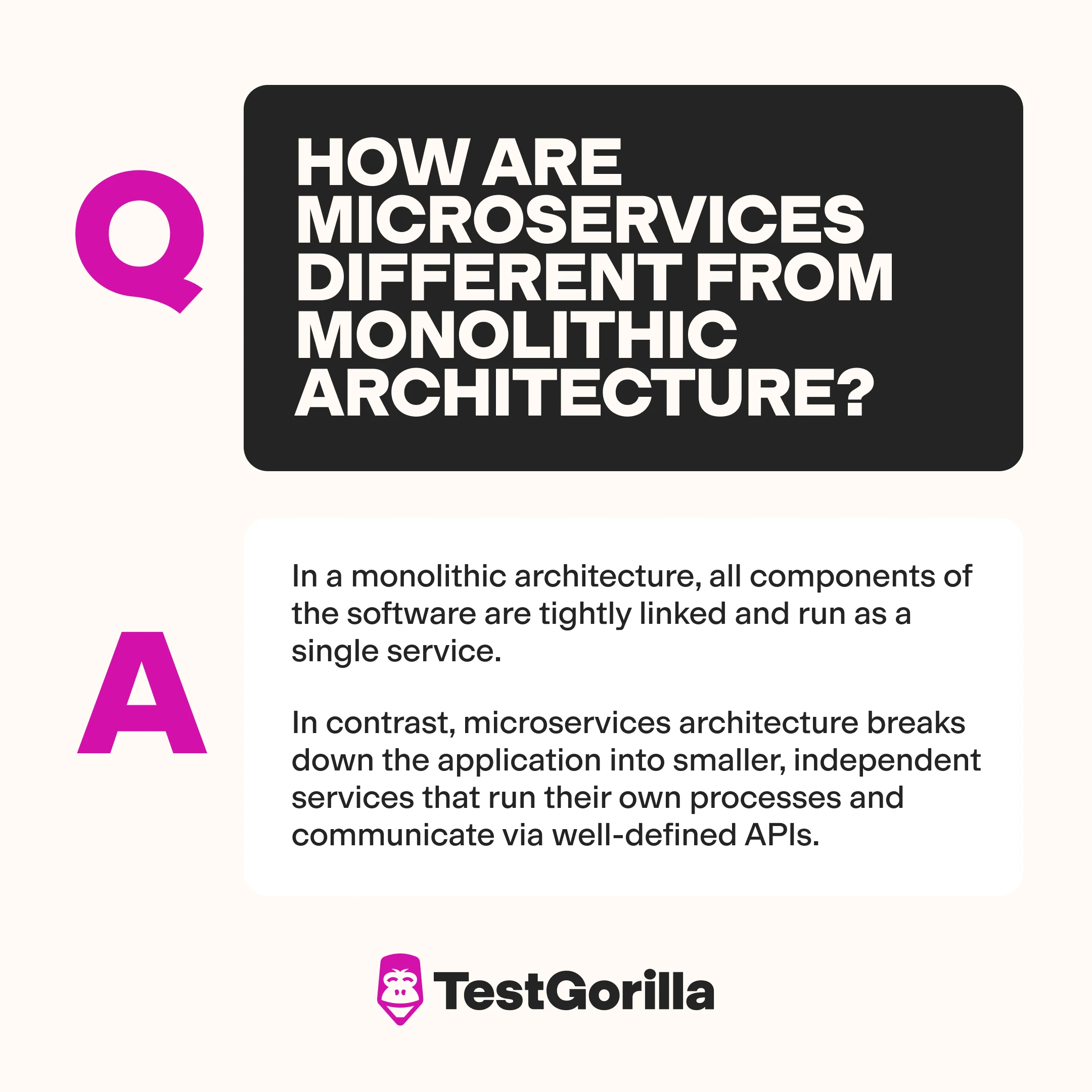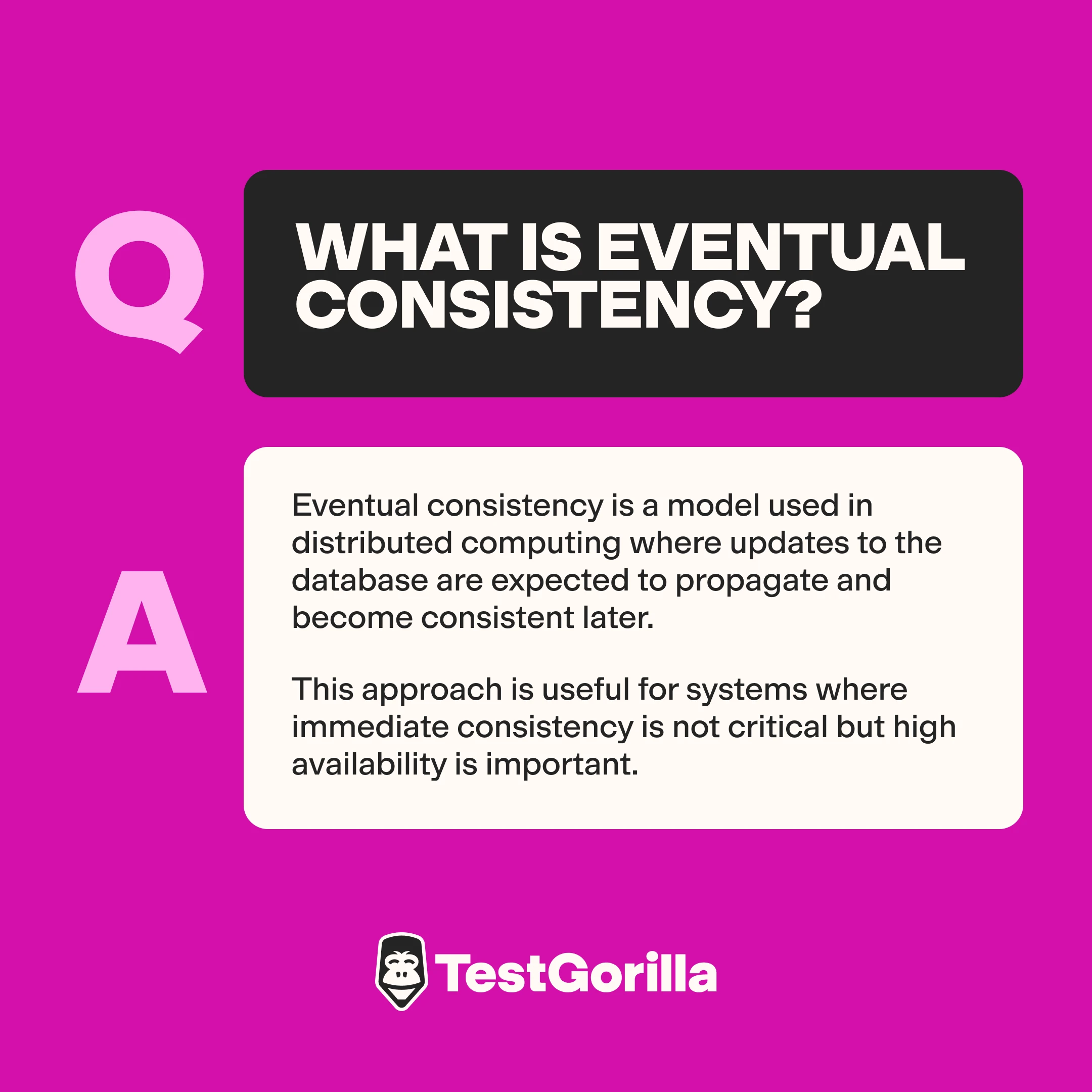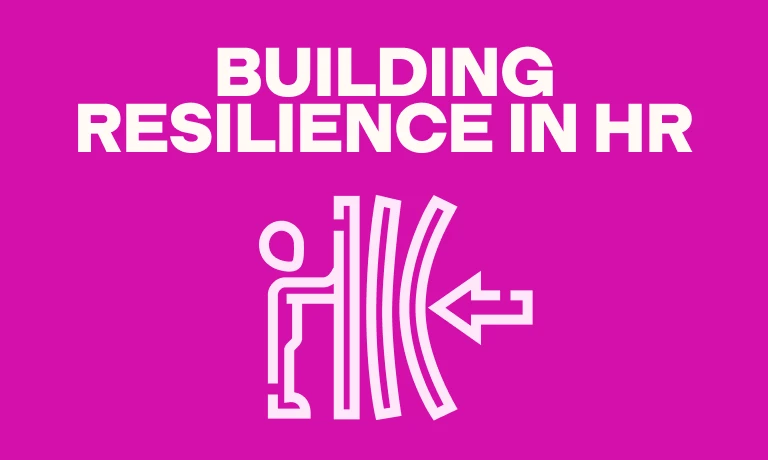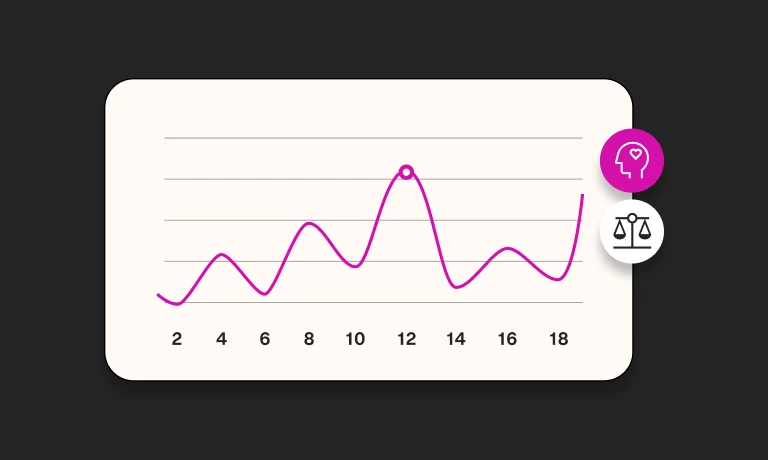60 microservices interview questions to hire top software architects and engineers
Many tech companies strive to build agile and resilient software operations – and a microservices architecture can be one of the best strategies in achieving this.
To use this approach, you need a team of skilled software developers who know how to build, deploy, and maintain microservices systems using tools like Docker and Kubernetes.
Assessing applicants’ skills accurately and objectively is crucial for securing top talent – but how do you do this?
The best way to hire expert DevOps engineers and software architects is to:
Use pre-employment skills testing to evaluate applicants’ skills
Interview the best talent to find the true stars in your talent pool
For the first step, you can build candidate assessments using our DevOps, Docker, and Kubernetes tests.
To help you with the second step, we’ve prepared a selection of 60 microservices interview questions you can use to gauge applicants’ experience, along with sample answers to 25 of them.
Top 25 microservices interview questions and answers to hire the best tech talent
In this section, you’ll find the best 25 interview questions you can use to assess candidates’ skills and experience with microservices architecture.
If you aren’t a microservices expert yourself, don’t worry – we’ve also included guidelines on what to expect from developers’ answers.
1. How are microservices different from monolithic architecture?
In a monolithic architecture, all components of the software are tightly linked and run as a single service. This means that any changes made to even a small part of the application could affect the whole system.
In contrast, microservices architecture breaks down the application into smaller, independent services that run their own processes and communicate via well-defined APIs. This independence allows for easier scaling, more resilience, and faster deployment cycles.
2. Can you explain the concept of “bounded context”?
Bounded context is a central pattern in domain-driven design (DDD) that defines clear boundaries around a microservice. Each microservice manages its own domain model and is independent from others. This helps avoid conflicts and overlapping among various services.
Skilled developers might also mention that bounded contexts make systems easier to maintain and understand by keeping related functions together and separate from unrelated ones.
3. What are the main advantages of microservices?
Expect candidates to list several key advantages of microservices architecture:
Scalability: Services can be scaled independently based on demand
Flexibility in technology: Developers can use different programming languages or data storage technologies for each service
Resilience: Failure in one service doesn’t necessarily bring down the entire system
Ease of deployment: Services are easy to update, deploy, and scale independently
4. What challenges do microservices present?
Candidates might mention challenges such as:
Complexity in managing multiple services: This can include issues with distributed systems, such as network latency, fault tolerance, and message serialization
Data integrity: Ensuring consistency across services can be difficult
Testing: Microservices often require complex testing strategies
Overhead: Memory and processing requirements are higher due to duplication of tasks (f.e. the authentication across services)
5. How do microservices communicate with each other?
Expect candidates to mention synchronous APIs like REST or GraphQL and asynchronous messaging, for example via Apache Kafka or RabbitMQ.
Microservices often communicate through stateless methods which require each call to contain all the information needed to complete the request. They can also communicate through event-driven approaches which help in decoupling and asynchronous interaction.
6. Can you explain the role of a service mesh in microservices architecture?
A service mesh provides a transparent and dynamic way to manage service-to-service communication and is responsible for routing traffic, handling failures, service discovery, and security.
Candidates might mention tools such as Istio or Linkerd.
7. What are some of the ways to secure microservices?
Developers need to secure each microservice individually and also secure the communications between them.
Here are some of the strategies that make it possible to secure microservices:
Authentication and authorization to ensure only authorized users can access the services
Secure communication by using protocols like TLS to encrypt the data in transit
API gateway to manage, authenticate, and monitor traffic
Secrets management by using tools like HashiCorp Vault
8. How would you decompose a monolithic application into microservices?
Look for candidates who have a structured approach to breaking down a monolithic application. They might explain they would:
Identify business capabilities or domains
Map these to services
Conduct domain-driven design to define bounded contexts and ensure services are loosely coupled but highly cohesive
It’s important to start small, perhaps by isolating a small piece of functionality or a module as a separate service and then gradually decompose other modules.
9. What is the difference between microservices and serverless architecture?
A microservices architecture involves developing an application as a collection of small, autonomous services, each running in its own process and communicating over network calls.
In serverless architecture, developers write functions that a platform runs only when needed, without managing the underlying infrastructure. Serverless architecture is an event-driven execution model and is ideal for simple or single-purpose functions.
10. What are the key principles to follow when designing microservices?
Some of the fundamental principles for microservices architecture are:
Single responsibility: Each microservice should have a single responsibility and manage a specific aspect of the application
Loose coupling: Services should have minimal dependencies on each other, which means developers can build, deploy, and scale them independently
High cohesion: It’s important to group together related functionalities to make services easier to maintain and understand
Business domain centricity: Developers need to model services around the business domain
Autonomy: Each service should own its domain data and logic
Observability: It’s key to design services that can be monitored and debugged easily
11. What is the significance of domain-driven design (DDD) in microservices?
Domain-driven design helps accurately define the boundaries for microservices based on the business domain. It ensures that service boundaries align with business boundaries, which makes services easier to maintain.
12. What is containerization?
Containerization is a lightweight alternative to full machine virtualization. It involves encapsulating an application and its dependencies into a container that can be executed on any supported operating system. This ensures the portability, efficiency, and scalability of services.
Candidates might mention Docker as a popular platform they use to develop, ship, and run containers.
Need to evaluate applicants’ Docker skills? Use our Docker test and 50 Docker interview questions.
13. How do versioning and backward compatibility affect microservices?
Versioning in microservices is crucial for managing changes and maintaining compatibility with service consumers.
Different versioning strategies exist, such as:
Semantic versioning (SemVer)
URI versioning
Backward compatibility enables old and new versions of services to operate simultaneously without breaking. It relies on strategies such as:
Using deprecation policies
Supporting multiple API versions
Adding optional parameters
Both versioning and backward compatibility minimize downtime and service disruption and help maintain system integrity.
14. What tools do you use for microservices development?
A wide variety of tools exist to support microservices.
For coding, candidates might mention specific frameworks like:
Spring Boot for Java
Express for Node.js
Flask for Python
Use our Spring, Express.js, and Flask skills tests for more insights on candidates’ experience with each framework.
For deployment, expect them to mention Docker and Kubernetes (for which we also have tests).
For version control, they’ll likely mention Git. Use our GitHub test to see how familiar they’re with it.
15. How do you monitor the health of microservices?
Monitoring tools that track the performance and health of microservices include Prometheus, Grafana, or Datadog.
Strategies to look for include:
Setting up health checks
Logging with ELK (Elasticsearch, Logstash, Kibana)
Using distributed tracing tools like Jaeger or Zipkin
16. Which container orchestration platforms are you familiar with?
Skilled developers will be familiar with popular orchestration platforms like Kubernetes, Docker Swarm, and Apache Mesos, with Kubernetes being the most widely used of the three.
Ask them to tell you more about their experience with container orchestration. Look for mentions of managing container deployment, scaling, networking, and load balancing.
17. What are some popular frameworks and libraries for building microservices?
Spring Boot, Micronaut, Helidon, or Express.js facilitate microservices development by providing tools to handle routing, middleware, and other boilerplate needs.
Libraries specific to languages include Go's Go Kit or Python's Flask and FastAPI.
18. What strategies would you use to ensure zero downtime deployments?
Look for mentions of:
Blue-green deployments
Canary releases
Rolling updates
All these strategies enable developers to test and gradually phase into production new versions of services without impacting the current system.
Feature toggles help enable or disable features without redeploying services.
19. How do you handle user authentication across microservices?
For this, candidates might use centralized identity providers (IdPs) and tokens like JWTs or OAuth tokens.
You can expect them to explain how tokens are generated after the initial login and then passed to other services to maintain a user session, or also how API gateways authorize requests before they reach individual services.
20. What is eventual consistency?
Eventual consistency is a model used in distributed computing where updates to the database are expected to propagate and become consistent later. This approach is useful for systems where immediate consistency is not critical but high availability is important.
21. Can you explain the concept of idempotence?
Idempotence ensures that performing the same operation multiple times produces the same result as doing it just once. This is crucial for error handling and retry mechanisms and helps ensure stability and consistency.
In the context of microservices, idempotence refers to the ability of a service to handle repeated requests safely.
For example, an idempotent operation could be a PUT request that updates a resource; no matter how many times it executes, the final state will be identical.
22. What is CQRS?
CQRS, short for command query responsibility segregation, is an architectural pattern that separates read and write operations into different models. This enables better performance, scalability, and security, because developers can scale and secure read and write systems independently of each other.
This pattern might result in more complex architectures but it also provides significant benefits in situations where there’s a high demand for either read or write operations.
23. What is blue-green deployment?
Blue-green deployment helps reduce downtime and risk by running two identical production environments, only one of which is live at any time.
Development teams can switch from blue (current production) to green (new version) once the new application version is ready for release.
Top benefits of blue-green deployment include:
Instant rollback capabilities, because the old version can be kept running in parallel
Minimal downtime, because the switch can be as simple as redirecting traffic
24. What role does DevOps play in microservices architecture?
The DevOps methodology is essential for the success of microservices architecture because of its focus on automation, continuous integration, and continuous delivery.
Top software engineers will explain how DevOps simplifies the development, testing, and deployment of microservices. They might also touch on specific practices such as infrastructure as code (IaC), automated testing, and continuous monitoring, which help maintain the health and performance of
Use our DevOps test to check applicants’ proficiency in the key principles of DevOps.
25. What metrics would you track for microservices performance?
Metrics candidates should mention include:
Latency: The time it takes to process a request
Throughput: The number of requests that can be handled in a given time frame
Error rates: The frequency of failed requests
Resource usage: CPU, memory usage, and network IO, which help in identifying bottlenecks
Availability: The percentage of time the service is available and operational
35 additional microservices interview questions you can ask candidates to gauge their knowledge
Looking for more questions to use in your interviews? Below, you can find 35 more questions that’ll help you identify and hire top software developers with relevant microservices experience.
For more ideas, check out our Docker and Kubernetes interview questions.
What factors would you consider when defining service boundaries?
How do you ensure data consistency across microservices?
What are some of the ways to handle failures in microservices?
How do you manage transaction management across microservices?
How would you handle session management in microservices?
How do you test microservices?
What's Docker and how do you use it?
What's your experience with Kubernetes?
Can you describe what a Kubernetes Pod is and how it differs from a Docker container?
What is Docker Compose and what are its advantages in multi-container environments?
How would you optimize a Docker image for a production environment?
Describe the process and benefits of auto-scaling in Kubernetes.
How does Kubernetes handle service discovery and load balancing?
How do you implement continuous integration/continuous deployment (CI/CD) with microservices?
How do you ensure the resilience of microservices?
What logging practices are important for microservices?
Are you familiar with any service discovery mechanisms?
Tell us about a project where you successfully implemented microservices.
How would you troubleshoot a performance bottleneck in a microservices architecture?
Describe a time you had to scale microservices. What approach did you use?
How would you convert a legacy system to microservices?
Explain how you would handle a scenario where different services require different release cycles.
How would you deal with legacy systems when implementing new microservices?
How do you handle distributed transactions in microservices?
What are sagas?
What is a circuit breaker?
How do you implement API rate limiting?
What is the role of an API gateway in a distributed system architecture?
How do microservices affect application security?
What is your experience with microservices governance?
How do microservices impact application scalability?
How would you manage a database schema change in a microservice?
How do you manage configuration settings across multiple microservices?
How can microservices be used in cloud computing?
What is your approach to documentation in microservices projects?
The best insights on HR and recruitment, delivered to your inbox.
Biweekly updates. No spam. Unsubscribe any time.
Hire top software developers – the easy way
Now that you have the best interview questions to evaluate candidates’ microservices skills and experience, you simply need to create a targeted skills assessment to decide whom to interview.
Check out our test library featuring more than 400 tests that you can use to hire for all roles – including senior tech positions.
Sign up for a free live demo to chat with one of our team members and see how TestGorilla can help you evaluate applicants’ skills quickly and effectively. Or, if you prefer trying out the platform yourself, check out our free forever plan.
Related posts
You've scrolled this far
Why not try TestGorilla for free, and see what happens when you put skills first.
















